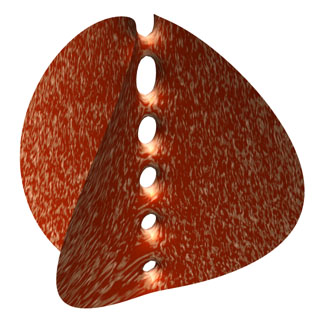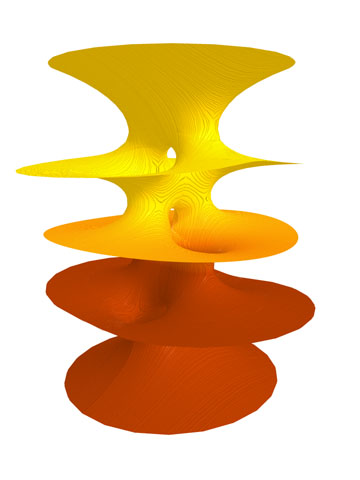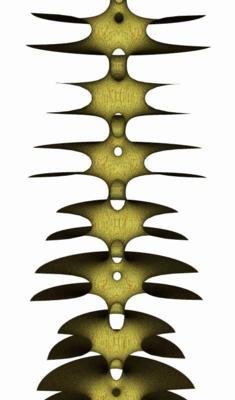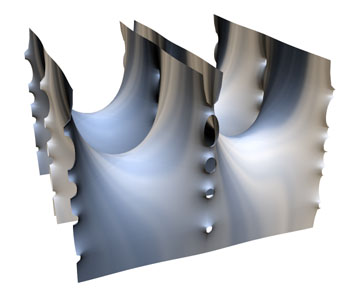Handle Addition
Using methods from Teichmüller theory, Mike Wolf and myself have found a conceptual method for provinng the existence of all the surfaces shown here (and many more)
The actual symmetry group of the surface is larger, and it is a matter of taste how large a fundamental piece one is using. The order 5 rotational symmetry of the surface is in this case very well visible.
The surfaces in this series have for their genus the smallest possible absolut total curvature.
If the genus increases, the surfaces might converge to the singly periodic Scherk surface. A proof of this would certainly help understanding limit situations tremendously. In all known cases, limits of minimal surfaces seem to be simpler than a priori possible.

Numerically, these surfaces are very difficult to treat, as the Weierstraß points of the underlying hyperelliptic surface are very close to each other.

In two fundamental pieces of the Callahan-Hoffman-Meeks surface, I have added three additional handles.
With increasing number of handles, a conceivable limit surface might be a singly periodic surface with a singular vertical line, found by Lopez and Martin.

Numerically, the planar ends in between of which the handles are attached become closer and closer.
If one fixes the size of the fundamental square, these surfaces might converge to two ordinary doubly periodic Scherk surfaces, shifted against each other by a half period, so that they have only vertical lines in common.
This is far from provable at the moment.
I also would like to know whether all these surfaces admit shear deformations.
